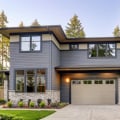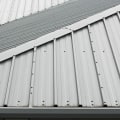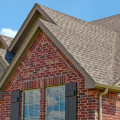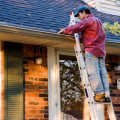What materials are used to make a flat roof? A variety of materials can be used to make a flat roof. The most common include EPDM rubber, single layer (TPO, PVC), modified bitumen, constructed roofing (BUR), and spray polyurethane foam. Many homeowners choose EPDM or TPO. To do this, you need to know the best material for a flat roof.
While there are a variety of options, there are 4 flat roof materials that stand out. Let's look at the 4 best materials to replace a flat roof. EPDM is extremely durable and is basically like having a bulletproof rubber roof system. Because of this durability, you can expect to get 25 to 30 years with a fully bonded 0.060-thick flat EPDM roof.
But remember, if you have a window that faces above the membrane, the white membrane will get dirty much faster than a black membrane. While it's not as durable as EPDM, you can wait 25 years with a flat TPO membrane roof as long as it's properly installed. The only major difference is that PVC is a bit more flexible and has been around longer than TPO. Like the TPO, you can wait 25 years with a flat PVC roof as long as it's properly installed.
As long as it's properly installed and your attic is properly ventilated, there's no reason you shouldn't spend at least 30 years outside your flat metal roof with upright joints. Under ideal conditions, a flat metal roof with vertical stitching could last 50 years. However, the additional lifespan and aesthetics come at a higher price, and will be more expensive than all 3 types of roof membranes. All 4 flat roof materials are great options.
The important thing is to choose the material that fits your budget and the look you want. Since 1990, the Bill Ragan Roofing team has been providing high-quality roofing services in and around Nashville. Whether you need repairs or a total roof replacement, we take the time to inform you about every aspect of your project. Once the job is complete, you'll have a lifetime warranty on our workmanship to protect your investment.
The traditional hot tar and gravel roof is constructed of three or more layers of waterproof material alternated with hot tar and backed by a layer of smooth river stone. Once made of tar paper, these types of roofs gradually use more advanced materials, such as fiberglass membranes. Below the basics, flat roofs are generally constructed with a roof, nailed to the beams that support a deck (usually wooden in residential construction), a vapor barrier, insulation, and a roof board. From there, the flat roof system you choose will determine the materials you apply.
Burrored or accumulated roofs have been used for more than 100 years in the United States and are often referred to as tar and gravel roofs. The layers of roofing felt, usually one meter wide, were scratched and covered with hot molten tar. Workers would heat asphalt, tar, or coal tar to liquid in a large kettle and then scrub it on the roof. After cleaning the 2 to 4 piles or layers, or the roof felt with tar, the roofs were often covered with aggregates or gravel.
Small stones or gravel were used to protect the tar from the damaging effects of the sun's UV rays. Thermoplastic roofing membranes are individual layers of material, usually white or gray, but can be found in other colors. These membranes can be attached, similar to an EPDM rubber roof, or mechanically fixed with screws and plates. From a distance, PVC and TPO membranes are difficult to distinguish, but most often they are white or light-colored.
Flat roofing refers to a type of roofing system that has a minimum slope, generally less than 10 degrees, and is generally used in commercial and industrial buildings. It differs from sloped roofs, which have a steeper slope and are more commonly found in residential buildings. Some of the most popular flat roof materials include EPDM, TPO, and PVC, which are both durable and durable. BUR uses tar, but bitumen is a substitute.
Tar smells bad and is messy. Bitumen uses asphalt layers with a protective top layer of sealant or other protective material. The best part about bitumen is that it comes in pieces that stick and stick together, making it easy to apply. You can get detachable asphalt that works just as well as poured asphalt and is more affordable than other roofing options.
Vegetation roofs are one of the oldest types of roofs. Clay and thatched roofs became the standard. Vegetated roofs are making a comeback. This type of roof has vegetation that grows over an impervious system.
The grass is for use in the garden of the house. You can grow plants on your roof. Most flat roof sheds use bitumen over tin or plywood. If you buy it from a manufacturer, it's a good idea to add 5 degrees to the slope to prevent water from accumulating in the sheds.
Coal tar pitch is often confused with asphalt, and asphalt with tar pitch. Although both are black and both melt in a teapot when used on ceilings, that's where the similarity ends. The Burr-style tar and gravel roof is perhaps the oldest and most standard type of flat roof. It's what comes to mind when we think of flat roofs.
BURs are becoming less likely to be detected in residential properties thanks to the advent of other types of flat roofs, although BURs are the preferred roof style when it comes to commercial buildings. If you have a flat roof or a low-sloped attic above a bedroom, the TPO is a great choice because it will keep the room cooler. They can be partially loose, placed and secured with river rock ballast (requires a roof structure to support the weight), or completely attached to the roof covering. TPO (thermoplastic olefin) is a type of flat roof material that is made of thermoplastic polyolefin.
This type of roofing is similar to recessed roofing (BUR), but uses a modified bituminous membrane instead of felt or fiberglass. A protected membrane roof (PMR) is a roof where thermal insulation or other material is located above the waterproofing membrane. The materials that cover flat roofs often allow water to drain from a slight slope or curvature into a gutter system. Grass or lawn roofs have been around since Viking times, if not much earlier, and are a decorative and durable roof covering.
Water from some flat roofs, such as those in garden sheds, sometimes flows freely down the edge of a roof, although gutter systems are an advantage in keeping both walls and foundations dry. Some former tar and gravel roofers recognize that unless a roof has been neglected for too long and there are a lot of problems in many areas, a BUR (an accumulated roof of tar, paper, and gravel) will last 20 to 30 years. In conclusion, flat roofs are a popular choice for many commercial and residential buildings, thanks to their low cost and ease of installation. Hot-applied asphalt or coal tar pitch mixes with bitumen-soaked roofing felt and creates a monolithic roof membrane.
These roofs are installed as thin laminate materials from 0.030 (30 thousandths of an inch) to 0.060 inches (60 thousandths of an inch) thick and are applied to the roof in a single layer. .



